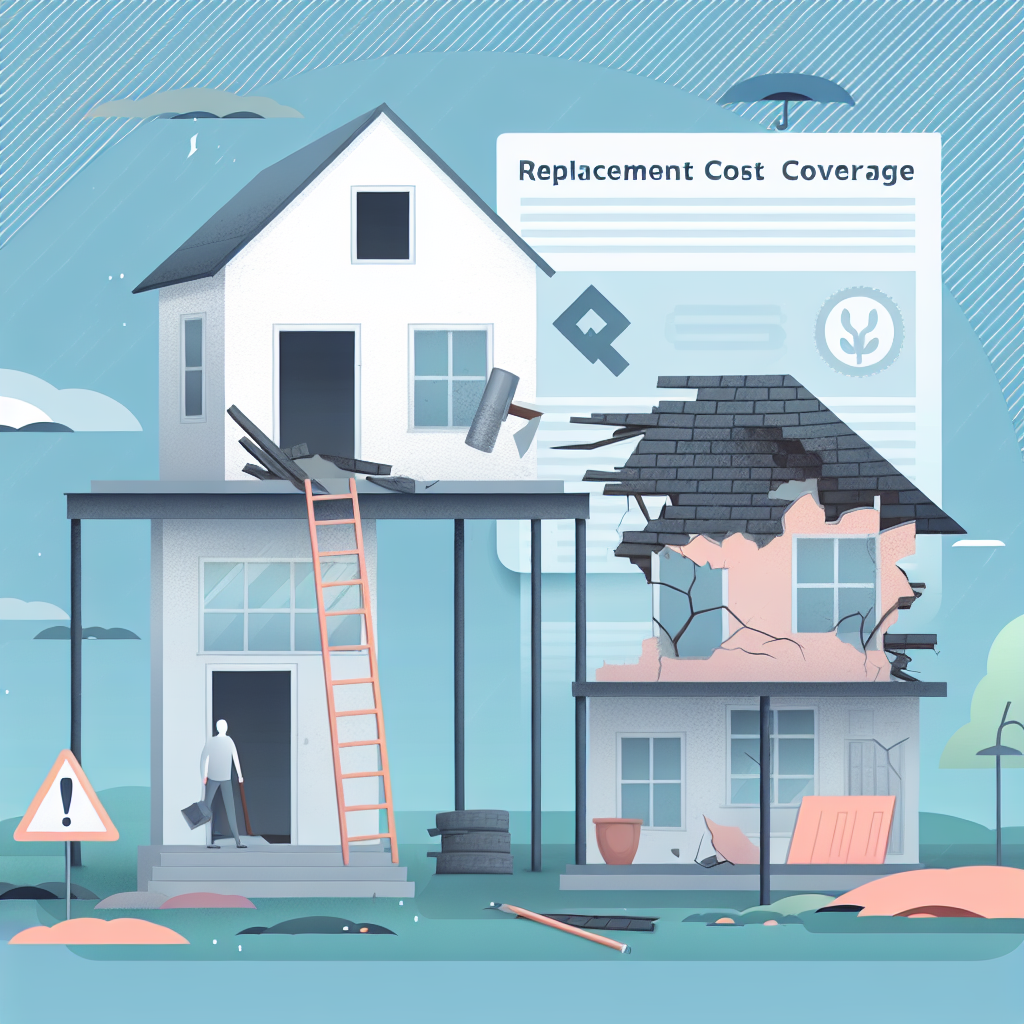Filed under Home Insurance on
Understanding Replacement Cost Coverage in Home Insurance

Home insurance is a crucial component of securing your property, providing financial protection against unforeseen events that could cause damage to your home. One critical aspect of home insurance is understanding the type of coverage you have, particularly replacement cost coverage. Let's delve into what replacement cost coverage involves, its benefits, and why it's essential for homeowners.
What is Replacement Cost Coverage?
Replacement cost coverage in home insurance refers to a policy that pays for the repair or replacement of your home and personal belongings without factoring in depreciation. Unlike actual cash value (ACV), which accounts for wear and tear over time, replacement cost coverage ensures you can rebuild or replace your possessions at today's prices. This type of coverage is beneficial for homeowners seeking comprehensive protection.
Differences Between Replacement Cost Coverage and Actual Cash Value
When selecting home insurance, understanding the difference between replacement cost coverage and actual cash value is crucial. Actual cash value only compensates you for the depreciated value of your items, meaning you might not receive enough funds to replace them fully. In contrast, replacement cost coverage provides the amount needed to restore your property to its original state, without deductions for depreciation.
Benefits of Replacement Cost Coverage
Choosing replacement cost coverage offers several advantages over other insurance options:
- Full Reimbursement: You'll receive the amount required to replace damaged items with new ones of similar quality and type.
- Peace of Mind: With replacement cost coverage, you can rest assured knowing that your policy will cover the current market prices of materials and labor.
- Investment Protection: This coverage protects the investment you've made in your home, allowing you to maintain its value.
How Replacement Cost Coverage Works
Replacement cost coverage typically operates in two stages. Initially, your insurer covers the actual cash value of the loss. After you repair or replace your possessions, you can submit receipts to receive the remaining balance, which covers the replacement costs. This approach ensures you get compensated fairly over time as you rebuild or purchase new items.
Eligibility and Policy Details
To qualify for replacement cost coverage, you must typically insure your home for at least 80% of its estimated replacement value. This requirement ensures sufficient funds are available to cover a significant portion of potential damages. Be sure to review your policy thoroughly and consult with your insurance agent to ensure your coverage meets your needs.
Calculating Replacement Cost Coverage
Determining the appropriate amount of replacement cost coverage involves accurate valuation of your property and possessions. To ensure proper coverage:
- Conduct a Home Inventory: List all possessions, noting brand names, purchase dates, and estimated values.
- Consult Construction Professionals: Obtain an assessment of rebuilding costs from contractors or builders familiar with the area.
- Account for Inflation: Consider the potential increase in rebuilding costs and material prices over time.
Regularly updating your home inventory and policy ensures adequate coverage as your possessions and home value evolve.
Industry Trends and Insights
According to industry reports, replacement cost coverage is becoming increasingly popular among homeowners. As rebuilding costs rise due to inflation and material shortages, more individuals recognize the importance of comprehensive protection. Experts advise homeowners to ensure their policies account for these trends, reflecting the ever-changing landscape of home insurance needs.
Expert Opinions on Replacement Cost Coverage
Insurance professionals often recommend replacement cost coverage for its comprehensive protection. Many financial advisors highlight that replacement cost policies can be invaluable for homeowners planning long-term occupancy. By securing your financial footing now, you ensure peace of mind and stability in the event of a disaster.
Common Misconceptions About Replacement Cost Coverage
Several myths surround replacement cost coverage, potentially leading to confusion among homeowners. Here are some common misconceptions:
- It's More Expensive: While premiums may initially be higher, the comprehensive protection provided often offsets costs in the event of a loss.
- All Policies Are The Same: Coverage terms vary significantly, so it's critical to scrutinize different policies and providers carefully.
- It Covers Market Value: Replacement cost focuses on rebuilding expenses, not the fluctuating market value of your property.
Understanding these myths can empower you to make informed decisions about your home insurance policy.
Choosing the Right Policy
Deciding on the right insurance policy requires careful consideration of your personal circumstances and future plans. Consider factors such as your home's location, construction type, and potential risks. Consulting with an insurance agent can provide valuable insights into which replacement cost coverage best meets your requirements while fitting your budget.
Conclusion: Securing Your Home with Replacement Cost Coverage
Replacement cost coverage is a vital aspect of any homeowner's insurance policy. While it may require a larger upfront investment, the peace of mind and financial security it provides is well worth it. By understanding the nuances of replacement cost coverage, you can protect one of your most significant investments—your home. Ensure your policy is up-to-date, reflects current costs, and accurately covers your valuable possessions for a secure future.





